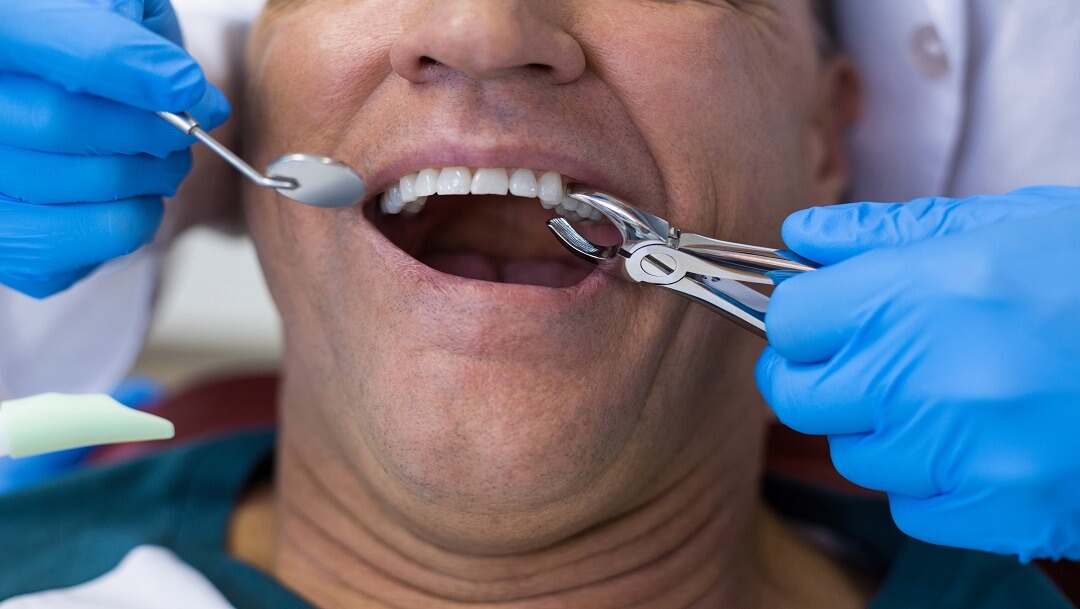Bleeding Again 24 Hours After Extraction
Bleeding 5 Days After Tooth Extraction: Is It Normal?

Preserving your teeth' health is always a dentist's top priority, using treatment options such as fillings or root canals. However, tooth extraction is also a common procedure, with dentists across the country removing millions of teeth each year. Whether due to dental decay, dental trauma, or overcrowding, dental extractions are a common treatment at Soundview Family Dental. Tooth extractions can be a simple extraction or a more complex extraction, such as for wisdom teeth, that requires oral surgery. With both extraction options, bleeding is normal and can continue for the first 24 hours. But what if the bleeding does not stop? What if you're bleeding 5 days after tooth extraction? What can you do and when should you contact your dentist?
Tooth extraction aftercare
After a tooth extraction and oral surgery, it is essential that you follow your dentist's aftercare instructions. These 48 hours are crucial to the healing process and the right care helps you avoid prolonged bleeding, infection, and painful complications, such as dry socket. This timetable breaks down your healing process and offers tips to help reduce bleeding and promote healing.
First 24 hours
The first 24 hours after extraction are when you can expect the most bleeding. This is normal. Your dentist will send you home with gauze placed over the extraction location to help provide pressure and allow the blood to clot. Be sure to apply constant pressure to this area by biting down on the gauze. You will also receive replacement gauze and should continue to replace this gauze for at least a few hours after the extraction. If you continue bleeding, you can substitute a cold, wet tea bag in place of the gauze. Tea contains tannins that help constrict blood vessels and promote clotting.
In addition to gauze, following these tips will also reduce bleeding and help promote healing:
- Do not rinse your mouth or spit blood out – Rinsing your mouth, especially with warm water, can dissolve the forming blood clot and increase bleeding. Spitting can also cause suction, pulling out the blood blot. If blood and saliva are building up in your mouth, simply let it drip out into the sink.
- Do not drink from a straw – This can again cause suction in the mouth and dislodge a forming clot.
- Avoid hot liquid or foods – These can dissolve the forming blood clots.
- Avoid blowing your nose or sneezing – if you must sneeze, do so with an open mouth.
- Do not smoke – smoking can create suction in the mouth and disrupt the healing process. It can also increase your risk of dry socket.
- Take time to rest – During the first 24 hours, your body needs time to rest and heal. When lying down, elevate your head slightly so that it is above your heart. This reduces blood pressure and helps to reduce bleeding.
- Use ice packs for swelling – in addition to bleeding, swelling is common after an extraction. Apply ice packs to your cheeks for 10-20 minutes at a time to help reduce this swelling.
First 48 hours
On day two after an extraction, you want to follow many of the same aftercare instructions given for the first 24 hours. While you should not experience anymore bleeding, it is still possible. Apply gauze or teabags as needed. It is important to understand that seeing blood in your saliva or on gauze at this point does not necessarily mean you are still bleeding. Saliva can pick up blood from a formed clot, making it appear as if you are still bleeding. Avoid any strenuous activity or exercise. Continue to avoid hot beverages, drinking with a straw, and smoking. Avoid any hard or crunchy foods that could traumatize the extraction site and dislodge the blood clot.
Day 3 to day 7
During the next few days, the goal is to maintain the blood clot and allow the area to heal completely. Continue with regular brushing and oral hygiene but avoid the extraction site and surrounding teeth. Rinse gently with warm saline solution to help kill bacteria. Continue watching what you eat and avoid hard foods or foods that require a lot of chewing.
At the end of this first week, granulation tissue forms. This helps protect the extraction site until bone forms in the area. You may continue to experience swelling and gum sensitivity for a few weeks. This is especially true after wisdom tooth extraction, where healing times may take a little longer.
Is bleeding after five days normal?
Bleeding five days after tooth extraction can occur, but it doesn't always mean there is a problem. Seeing small amounts of blood in your saliva is likely to occur, so you don't have to worry. In this case, your saliva is simply picking up blood from the clot, giving it a pinkish appearance. However, if you are experiencing heavier blood or regular bleeding, chances are you may have dislodged the clot, have a dry socket, or are having trouble clotting. If this is the case, you should contact your dentist immediately to evaluate your extraction site.
If you have concerns about bleeding after a tooth extraction or general questions about the procedure, Dr. Kitts at Soundview Family Dental is here. Contact us online or give us a call at (425) 563-6360 today and we can schedule an appointment.
chamblissclate1979.blogspot.com
Source: https://soundviewfamilydental.com/blog/bleeding-5-days-after-tooth-extraction-is-it-normal/
0 Response to "Bleeding Again 24 Hours After Extraction"
Postar um comentário